From Ghiso to Cartier: Art Deco’s Finest Jewelers and Innovators
Art Deco—a decade of glamor, elegance, sophistication, and awakening. The period flourished in the early 1920s lasting through the early 1930s, with its revolutionary impact reaching all corners of society, including the world of jewelry and design.
Art Deco was intrinsically an era of progression and forward-thinking traits solidified by the era's most renowned jewelry designers who sought to embrace avant-garde techniques to create stunning jewelry we still cherish today. In this article, we'll explore all things Art Deco, including some of the era's most famous and influential jewelers and their legacies in jewelry design.
The Genesis of the Art Deco: Origins and Influences
Emerging from the French term " Arts Décoratifs ", the Art Deco style encapsulated the epitome of elegance and craftsmanship at the time. Having surfaced after World War I, the revolutionary movement reflected the desire to shift from fluid designs inspired by the natural world to more modern, daring, simpler, and cleaner shapes.
Illuminated by cultures such as ancient Egyptian and Aztec art, Art Deco jewelers emphasized the sleek and modern aesthetic to capture the awakening and innovative post-war spirit. One of the highly influential movements that inspired Art Deco artists was Cubism, a then-novel approach invented by artists such as Pablo Picasso and George Braque. In contrast to the fluid and ornate pieces of the preceding Art Nouveau era, Cubism-inspired Art Deco jewelers crafted clean and symmetrical designs, as artists believed that wonders of the natural world could be innovatively portrayed in simpler shapes.
Decoding Deco Designs: Signature Features and Traits
Geometry and Symmetry
Art Deco pieces were often designed from simple shapes such as squares, rectangles, circles, and triangles. Using these shapes resulted in bold and geometrical jewelry pieces, where symmetry played a principal role in showcasing a sense of balance and order. The geometry extended beyond just gemstone placement and design and into the gemstone cuts themselves. During the Art Deco period is when Louis Cartier invented the “baguette cut,” a slender step-cut somewhat reminiscent of the famous French loaf of bread.

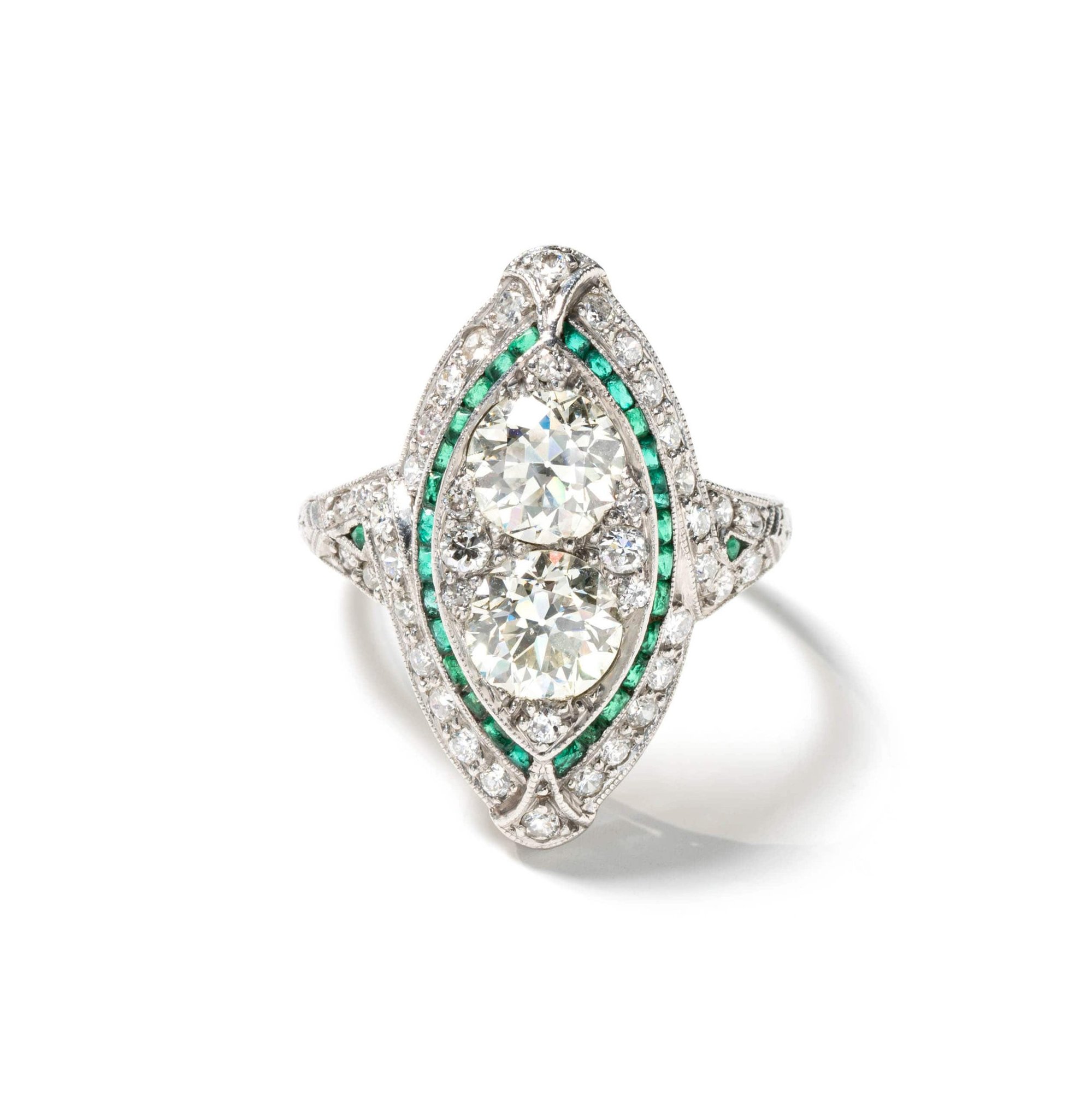


Intricate Patterns
Despite the incorporation of simpler geometrical shapes, Art Deco designs did not shy away from intricate patterns. Motifs like chevrons, zigzags, and sunbursts were strategically placed, creating dramatic but simple designs. Chevrons, for example, represent the ups and downs of life, giving hidden symbolism to Art Deco jewelry. Moreover, highly skilled artisans and lapidaries focused their efforts on details that gave jewelry depth and texture, including techniques such as filigree and engraving.




Metals and Gemstones
Stepping away from classic metals like yellow gold and silver, Art Deco designers focused heavily on the use of platinum and white gold. Loved for its remarkable strength and malleability, platinum's inner strength allowed jewelers and artisans to pursue the creation of more intricate and durable designs.
Diamonds and colored gemstones like rubies, emeralds, sapphires, and semi-precious gemstones like aquamarine, jade, and black onyx were extremely popular. The bold whiteness of platinum and other metals, such as white gold, allowed the juxtaposition of these colorful gems, giving way to the creation of stunning and dramatic combinations.





Gilded Icons: French Maestros of Art Deco Jewelry Design
In the roaring 1920s, Paris emerged as the global epicenter of avant-garde creativity, shaping the aesthetic landscape with bold geometric designs, lavish ornaments, and a fusion of modernist and traditional motifs. With the very name Art Deco deriving from the French term 'Arts Décoratifs', it is no surprise that French designers stand as pioneering architects of the Art Deco epoch, leading with their cultural finesse and artistic flair. French artisans led the charge in defining Art Deco's sleek sophistication and timeless magnetism, leaving an indelible mark on the history of jewelry.




Cartier
It's no surprise that the ever-iconic Maison Cartier shone brightly during the Art Deco, playing a significant role in shaping the jewelry trends of the era. Cartier Art Deco jewelry was inspired by the arts in the Far East and the Orient, showcasing intricate motifs and bold color schemes where colored gemstones were the spotlight.






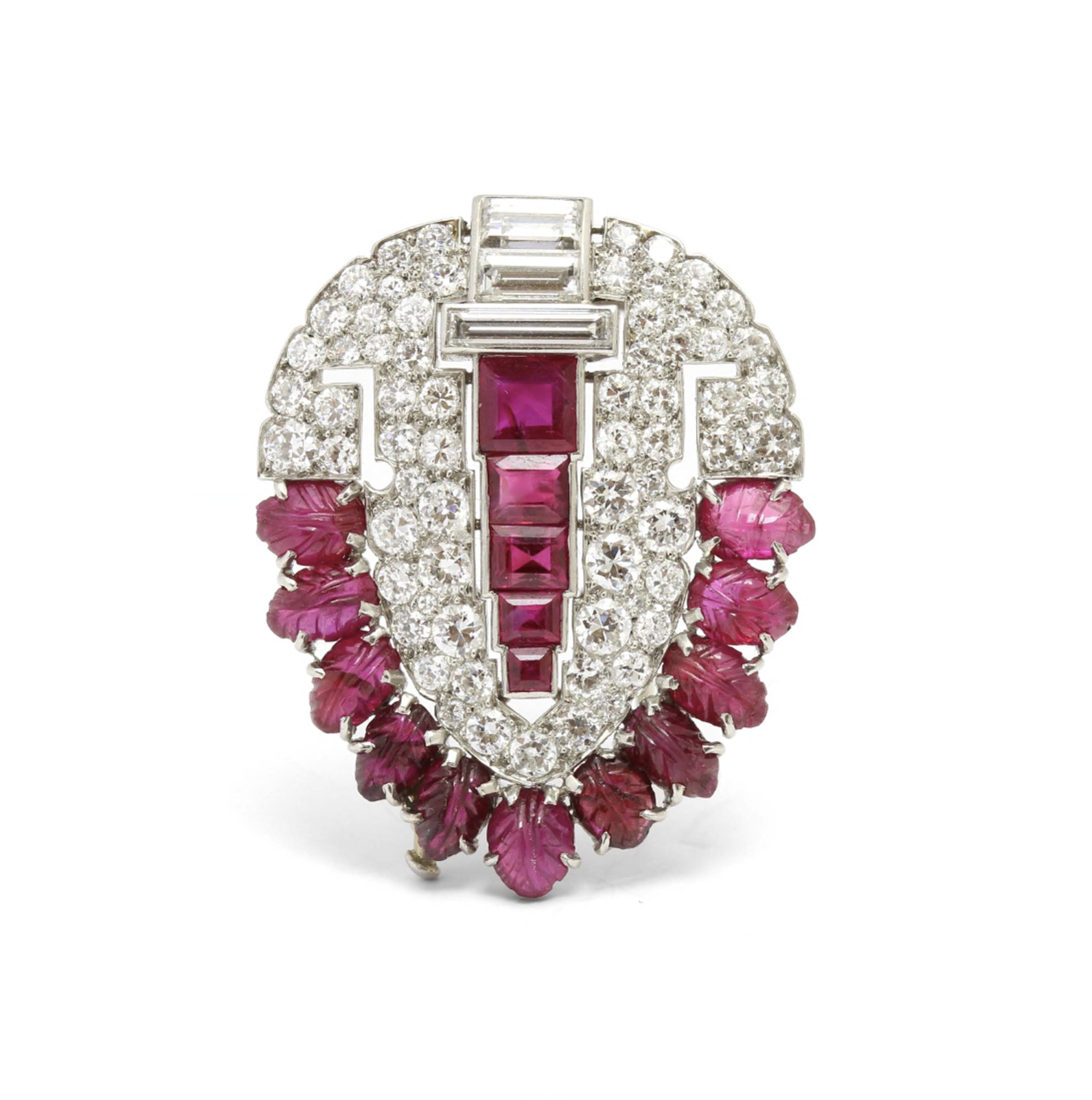



Ghiso
Ghiso Paris was a small French jewelry company founded in 1907 by Maurice Gobin and his partner Jean Soubrier, with the name "Ghiso" being a combination of their last names. The company quickly gained a reputation for creating high-quality, avant-garde jewelry with a modernist aesthetic.



Art Deco Ghiso jewelry featured intricate geometric designs, such as stepped patterns and angular shapes, which reflected the era's aesthetic. Symmetry was incorporated hand-in-hand with geometry, with gemstones following detailed repetitions of geometric motifs inspired by elements from places such as Egypt, China, and India, and giving the work's final composition harmony and sophistication. Diamonds, sapphires, rubies, and emeralds were typical gemstones featured in Ghiso's jewelry, with highly skilled craftsmen setting these to enhance their brilliance and emphasize dazzling focal points within the design.
One of the most impressive Ghiso pieces was auctioned at Sotheby’s in March 2023. This narrative bracelet (more on those later in the Van Cleef & Arpels section) of the New York City skyline set the estate jewelry industry into a tizzy and was featured on everyone’s social media from our own marketing director to Grant Mobley of the Natural Diamond Council, don’t miss his video that showcases how truly spectacular the design was in person.
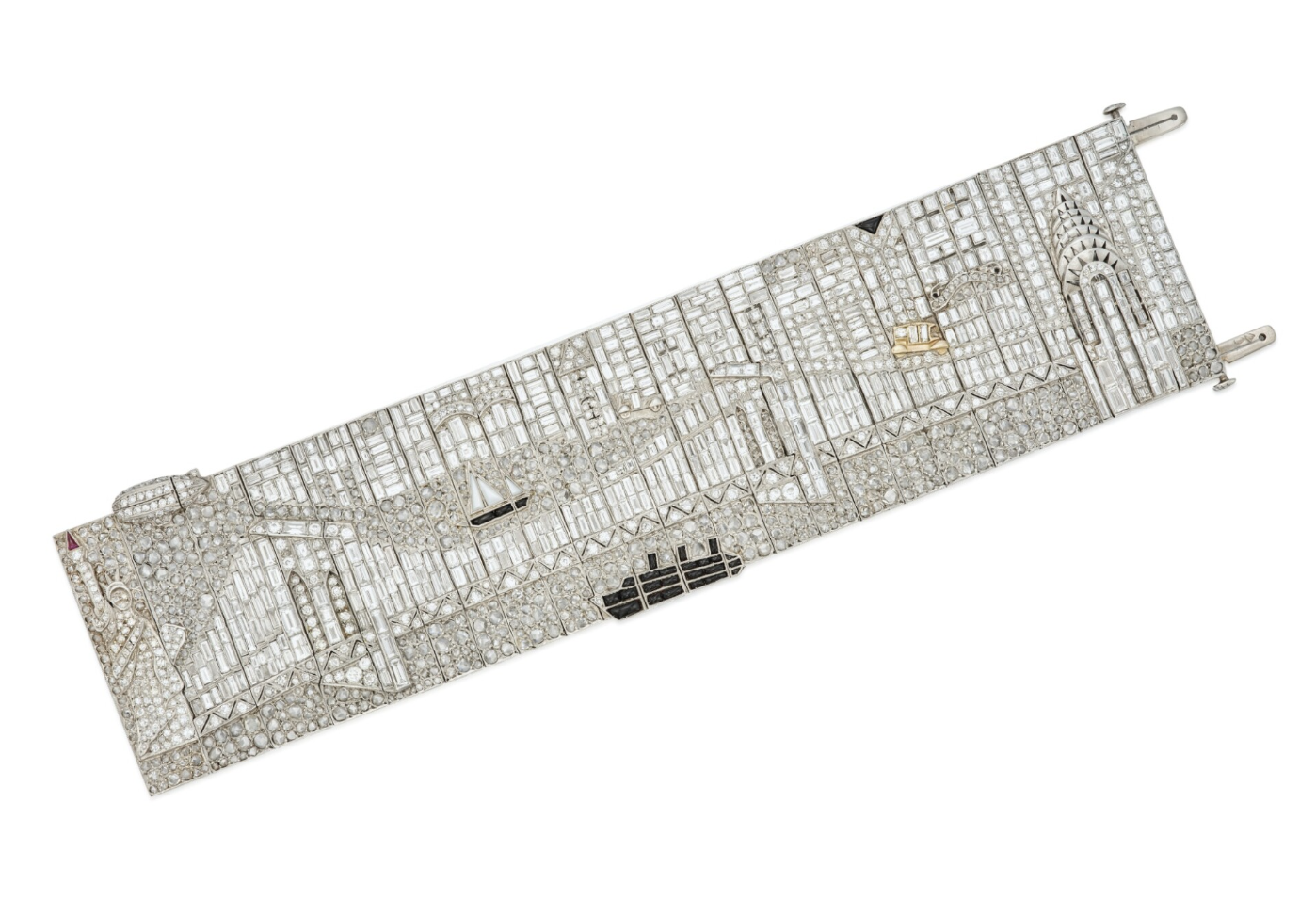
Rene Boivin & Suzanne Belperron
The House of René Boivin stood as an exemplar of creativity and innovation during the Art Deco. Under the leadership of Jeanne and René Boivin, the atelier produced bold and avant-garde designs, characterized by geometric motifs and the use of high-quality materials.
The visionary jewelry designer Belperron left an indelible mark on the industry during her tenure at Rene Boivin in the 1920s. These years saw her redefine Art Deco aesthetics, blending bold geometric forms with fluid lines—perhaps forging the start of her signature aesthetics.




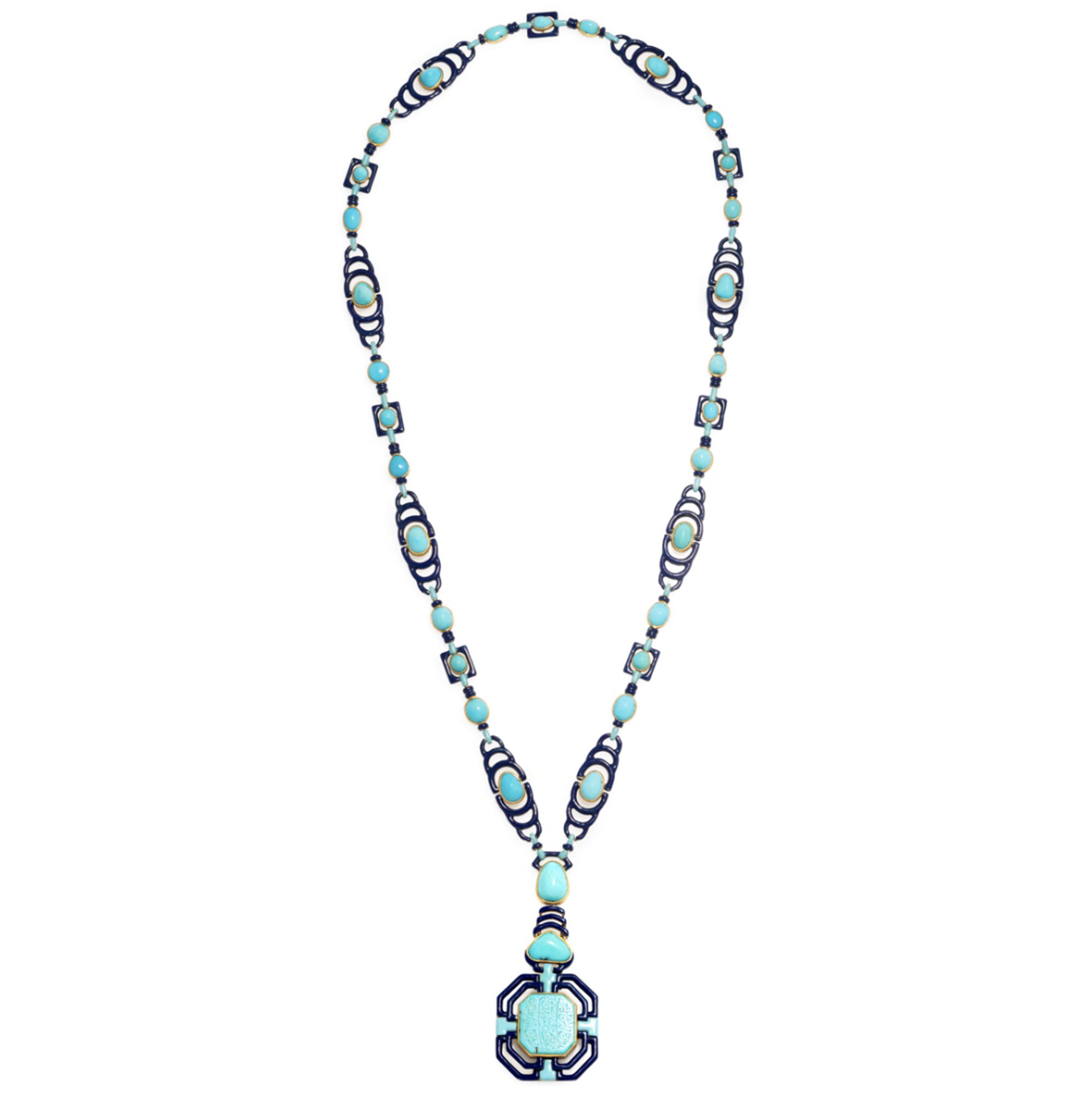

Belperron's creations for Boicin showcased her innovative style, which pushed the boundaries in jewelry design. One of Belperron's most prominent creations during this time was the Trompette ring. The ring features a striking design crafted from platinum and set with a single, elongated cabochon gemstone, often an aquamarine or chalcedony. Its sleek and tapered silhouette evokes a trumpet's elegance, showcasing Belperron's mastery of form and innovative approach to jewelry design.
Van Cleef & Arpels
Synonymous with quality and luxury, the bejeweled designs of Van Cleef & Arpels were an emblem of the Art Deco period. VCA, as it’s called in the industry, Art Deco jewelry did not fail to showcase the exceptional creativity and minute craftsmanship the Maison is known for, with the Mystery Set technique becoming a celebrated innovation and a true hallmark of the era.
Van Cleef’s ongoing tradition of narrative bracelets began with the 1920s Egyptian Revival. After King Tut’s tomb was found in 1922, VCA captured the ensuing “Egyptomania” on bracelets featuring motifs of pharaohs, sphinxes, and scarabs in diamond, onyx, lapis, sapphire, ruby, and emerald, among other gemstones. As Claibourne Poindexter of Christie’s told Town & Country Magazine, "If you asked me to name 10 jewels that a collector should own, a Van Cleef 1920s narrative bracelet would be one of them." This style is so iconic to the house that Elizabeth Taylor had one in her collection, which was previously owned by King Farouk, ruler of Egypt from 1936-1952.
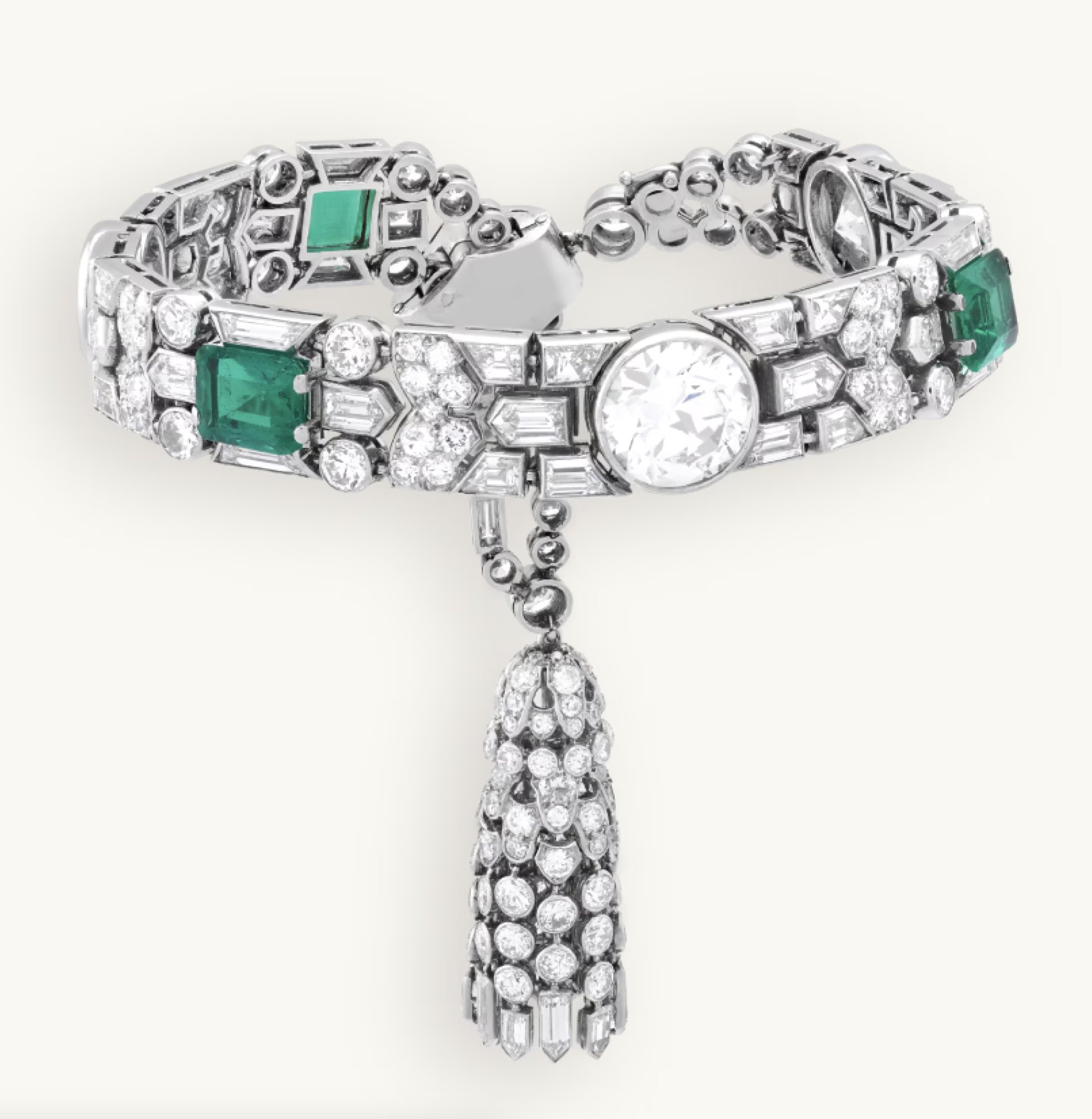


Another ingenuity from Van Cleef & Arpels during the Art Deco period was the Mystery Set technique, patented in 1933, which featured meticulously carved gemstones appearing to free-float. This clever and graceful design technique, still widely used in their contemporary designs, requires the gemstones to be individually carved to fasten onto a hidden metal rail beneath the surface of the jewelry. The detail and precision needed is such that it may take up to 8 hours to cut a single gemstone. Having become the Maison's signature, this is a style that is still adored by the crowds, and that transcended the Art Deco period.
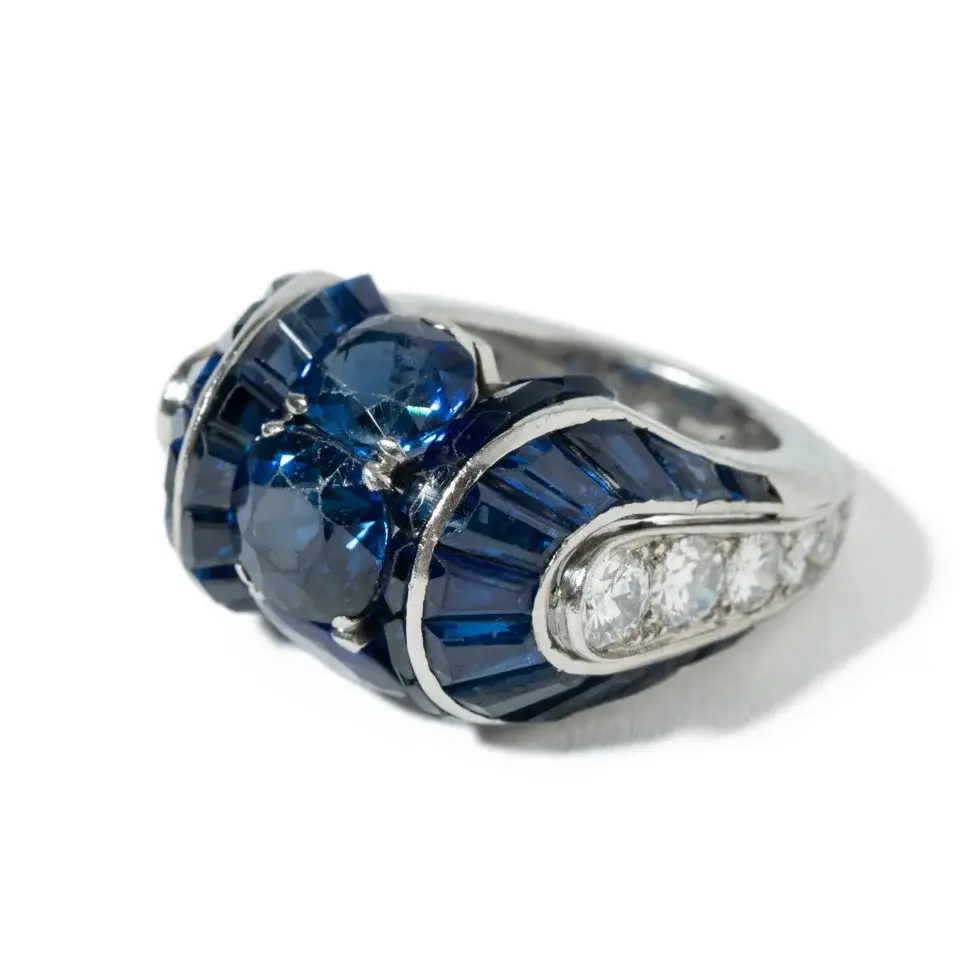 PLATINUM VAN CLEEF & ARPELS SAPPHIRE & R
PLATINUM VAN CLEEF & ARPELS SAPPHIRE & R
Boucheron
Inspired and driven by the architectural movements of the era, the house of Boucheron’s creations represented Art Deco's shift towards geometry and symmetry. By the time Art Deco came into fashion in the 1920s, Boucheron had already been in business for more than 60 years.
One elegant illustration of Boucheron's Art Deco creations is the elegant emerald and diamond brooch. Centered around a captivating emerald-cut emerald, weighing approximately 13 carats, the brooch is adorned with intricate diamond accents, totaling approximately 6 carats. The brooch showcases a geometric design, characteristic of the Art Deco era, featuring symmetrical lines and precise craftsmanship, and highlighting the era's emphasis on bold yet elegant aesthetics—in true Art Deco fashion.






The Boucheron's 1920s pearl necklace is another example of exuding elegance blended with opulence. The necklace is adorned with lustrous cultured pearls, carefully selected for their radiance and uniformity, and contrasting delicate rose-cut diamonds and carved emerald accents that infuse a touch of color and intrigue. Signed Boucheron on the reverse, this piece is a mastery of luxury design, evoking a sense of sophistication and enduring beauty that transcends bygone eras.
Chaumet
Marie-Etienne Nitot established the prestigious House of Chaumet in 1780 in Paris. Chaumet became renowned for its haute jewelry designs and exceptional timepieces and rose to prominence when it became the jeweler of the French imperial court. During the Art Deco period, Chaumet embraced geometric shapes, bold lines, and vibrant colors, reflecting the movement's modern aesthetics. Chaumet's Art Deco pieces showcase a blend of traditional elegance and contemporary flair and include the use of materials like platinum, diamonds, and colorful gemstones. Chaumet's Art Deco creations remain celebrated for their sophisticated design and timeless allure.






Mauboussin
Dating back to 1827, M. Rocher and J. Noury founded the House of Mauboussin, which gained international acclaim at the height of the Art Deco. Mauboussin epitomized the era's geometric elegance and modern appeal. As a designer, Mauboussin played a significant role in the Art Deco movement, creating pieces that featured a mix of precious stones, enamel, and platinum, and showcasing a true blend of tradition with modernity. Mauboussin's designs from this era are celebrated for their elegance and sophistication, making them highly sought after by collectors and connoisseurs.



Art Deco Disciples: The Renowned American Designers of the Era
Tiffany & Co.
Tiffany & Co., founded in the heart of New York City by Charles Lewis Tiffany and John B. Young, is one house that effortlessly epitomizes luxury and timeless elegance. Tiffany is particularly renowned for its exquisite diamonds and pioneering design styles. Tiffany's creations have adorned the world's most discerning clientele for generations.
During the Roaring Twenties, Tiffany & Co. extensively used platinum settings, showcasing dazzling diamonds alongside vibrant gemstones like sapphires, emeralds, and rubies, creating pieces that often incorporated motifs inspired by Egyptian and Asian art. Tiffany's innovative use of colored enamels and lacquer further distinguished their pieces during this era.
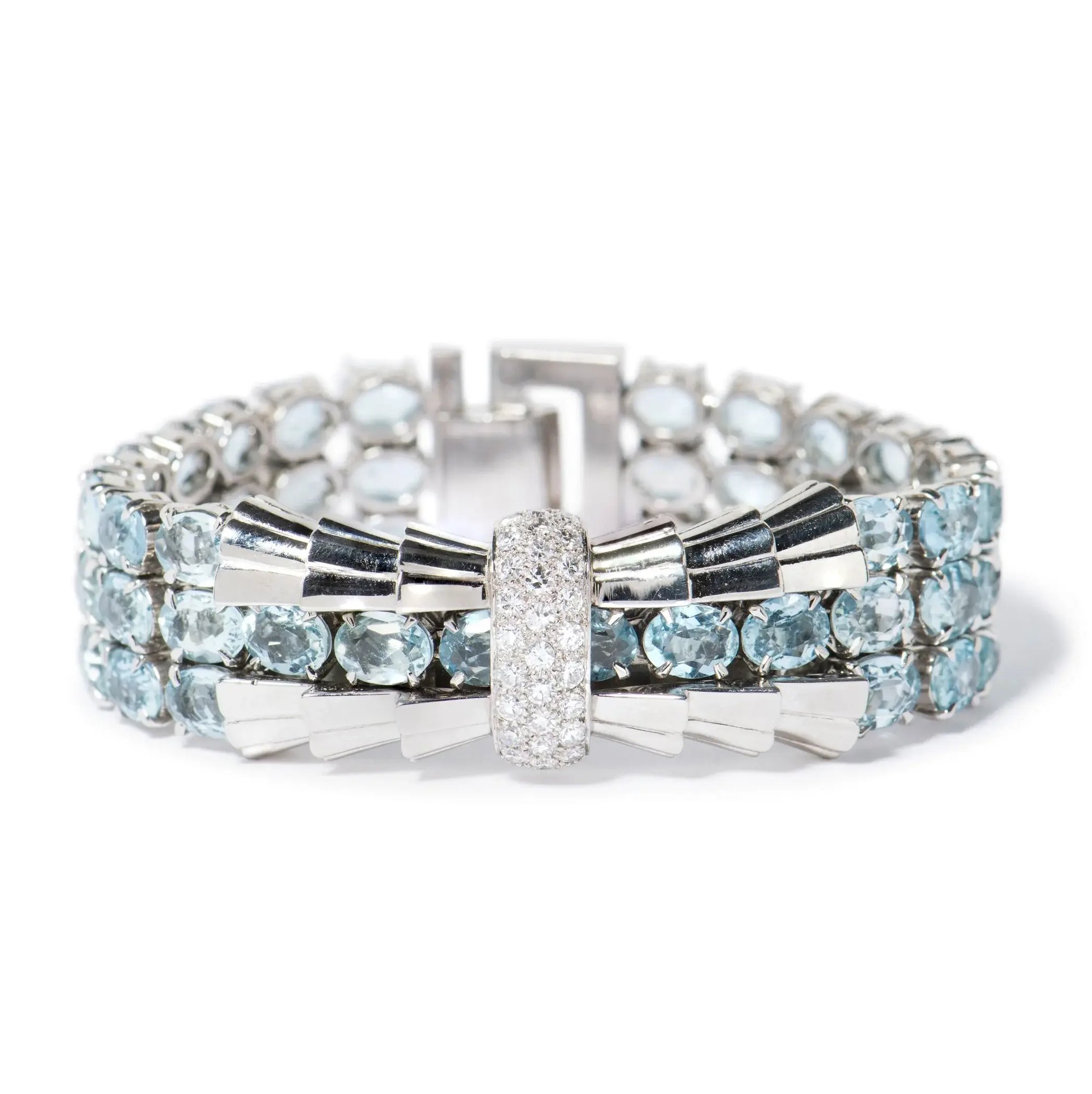


JE Caldwell
The J.E. Caldwell firm was established in the 19th century in Philadelphia by James Emmot Caldwell, and it became another name to gain prominence during the Art Deco for its exquisite jewelry and impeccable craftsmanship. Caldwell's designs are characterized by opulence and meticulous detail, especially catered to the elite, including high society and celebrities. Vibrant gemstones, symmetry, and intricate filigree work were cornerstones of Caldwell's Art Deco designs and reflected his fascination with modernity and luxury.
Caldwell's commitment to quality and innovation garnered them numerous accolades, including commissions for prestigious events like the Miss America Pageant, solidifying its reputation as a purveyor of elegance and grace.



Oscar Heyman & Brothers
Established in 1912 in New York City, Oscar and Nathan Heyman emerged as distinguished jewelers, synonymous with unparalleled craftsmanship and exquisite designs, a reputation they earned through their mastery of platinum work and superior levels of craftsmanship. From royalty to Hollywood stars, the Heyman brothers attracted affluent connoisseurs who sought exceptionality in each design.
During the Art Deco, the Oscar Heyman Brothers produced iconic pieces that captured the essence of the era's glamor and sophistication, cementing their legacy as one of America's premier jewelers with creations such as the Birds in Flight and the Emerald and Diamond bracelet. The Birds in Flight bracelet showcases a dazzling array of colored gemstones and diamonds set in the most meticulous, symmetrical design, epitomizing Art Deco elegance. Another Art Deco masterpiece is the Emerald and Diamond bracelet from circa 1920, which highlights stunning emeralds set amidst brilliant diamonds, which reflects the era's fascination with luxury and precision.



Raymond Yard
Raymond Yard, a prominent jeweler celebrated for his exceptional craftsmanship and exquisite designs, established his eponymous firm in 1922 at 522 Fifth Avenue in New York City with the backing of John D. Rockefeller, Jr. Due to the Rockefeller connection, the most prominent American families and movie stars became Raymond Yard customers, including the Woolworths, the Vanderbilts, the Duponts, the Harrimans, the Flaglers, Joan Crawford and Douglas Fairbanks.



Having trained under Marcus & Co. for 20 years, where he began as the doorman, Yard quickly gained recognition for his Art Deco creations characterized by geometric forms and intricate detailing. His mastery of platinum and gemstones elevated his pieces to coveted works of art.
Yard's signature style emphasized grace, often featuring geometric patterns, vibrant colored gemstones, and meticulous detail in artisan work. His clever use of platinum and mastery of invisible settings became hallmarks of his designs, setting new standards for luxury jewelry.
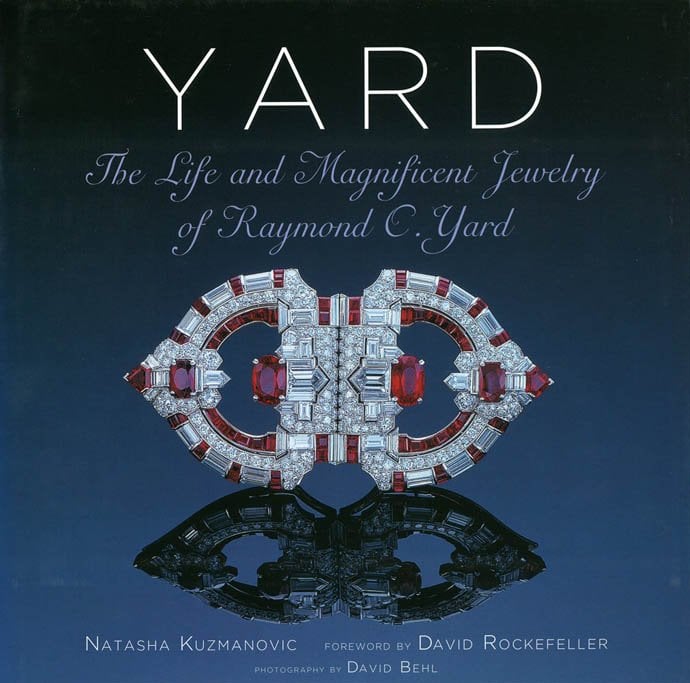
Beyond Boundaries: Art Deco's Enduring Presence in Contemporary Jewelry
The impact of Art Deco on jewelry and design reaches beyond the demise of the era in the 1930s. Forward-thinking and fusion of its designs with the new ideas of the movement gave jewelry pieces and trends an enduring, time-transcending appeal.
Art Deco's geometric precision, innovative use of myriad materials, and emphasis on quality and craftsmanship continue to inspire contemporary jewelers today. In fact, both Boucheron and Van Cleef & Arpels released Art Deco-inspired High Jewelry collections in 2021 to mark 100 years since the original design movement began. As the Art Deco legacy lives on it provides a timeless template for those who seek elegance and sophistication in every piece of jewelry.
If you're looking to sell Art Deco fine jewelry, contact us for an evaluation.